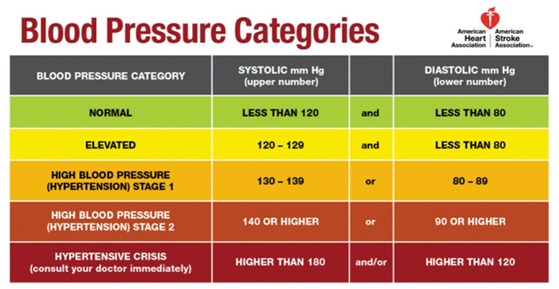Why every bodybuilder must own a blood pressure monitor
We all know what a blood pressure monitor is. Those cuffs that wrap around the arm and inflate and deflate to tell us what our blood pressure is.
In my opinion, every enhanced bodybuilder should have one on hand and use it regularly on-cycle to keep track of blood pressure fluctuations (which we all know can occur due to AAS use). Here’s why…
High blood pressure (hypertension) causes headaches & nose bleeding, makes it harder to breathe, impairs vision, damages the kidneys, causes cardiac hypertrophy and ultimately leads to the advent of a stroke or a heart attack.
High blood pressure is caused by many factors, but Steroids tend to increase it for two reasons:
- The first one is increased water retention, usually as a result of using estrogenic compounds.
- The second one is increased red blood cell count, which increases the viscosity of blood and thus the pressure it exerts against the walls of arteries
Monitoring your blood pressure
Monitoring your blood pressure allows you to take action so that you can potentially prevent a visit to the ER and minimize the risk of developing cardiovascular disease in the long run.
The only problem bodybuilders face with BP monitors, however, is that the typical BP monitors that wrap around the arm are not designed to accurately measure the blood pressure of arms over 17 or 18 inches in circumference.
In other words, if you have huge “guns”, typical BP monitors won’t work. You can find BP monitors that are “plus size”, but the easier solution is to find a wrist BP monitor instead.
I won’t go into detail on how to use them because these devices come with clear step-by-step instructions, but here’s how you interpret the results.
Blood pressure readings show two distinct numbers. The first one is your Systolic BP (blood pressure during a heartbeat) and the other one represents the Diastolic BP level (blood pressure between heart beats).
Ideally, you want your results to be between 100 and 120 for your Systolic BP and between 60 and 80 for your Diastolic BP.
Having levels below these ranges indicates LOW BP (hypotension) and having levels above these ranges indicates elevated or HIGH BP (hypertension).
This chart goes into more detail on the different stages of hypertension:

You should get your BP tested every other day during a cycle. Get it tested in the early morning to get the most accurate reading possible.
Managing your blood pressure
Chances are you will never experience hypotension during a cycle unless you are abusing vasodilators like Tadalafil, Sildenafil and L-Citrulline, or abusing ARBs (Angiotensin Receptor Blockers) and Beta Blockers.
Hypertension, however, is much more common…
If you are running estrogenic compounds like Testosterone, Trestolone or Dianabol, chances are you will experience increased water retention and high blood pressure. The obvious solution here is to use an aromatase inhibitor (AI) to bring estradiol levels down and decrease blood pressure by extension.
High blood pressure resulting from increased RBC is harder to manage. Even though donating blood helps bring it down, doing so during a cycle is not advised. The best way to manage blood pressure if water retention is not the cause is to utilize blood pressure lowering medications.
These are some of the supplements and medications you can use to decrease your blood pressure almost immediately. Pick one of these and dose it as indicated:
- L-Citrulline: 5g three times a day.
- Tadalafil: 5mg a day or 10mg every other day.
- Sildenafil: 25mg twice a day.
- Telmisartan (ARB): 40 to 80mg a day.
- Nebivolol (Beta Blocker): 5mg a day.
If there is no way for you to bring blood pressure down during a cycle, I suggest you lower the dose of whatever you are taking. If that doesn’t work, cut the cycle short and consider paying a visit to the ER to get professional help.









